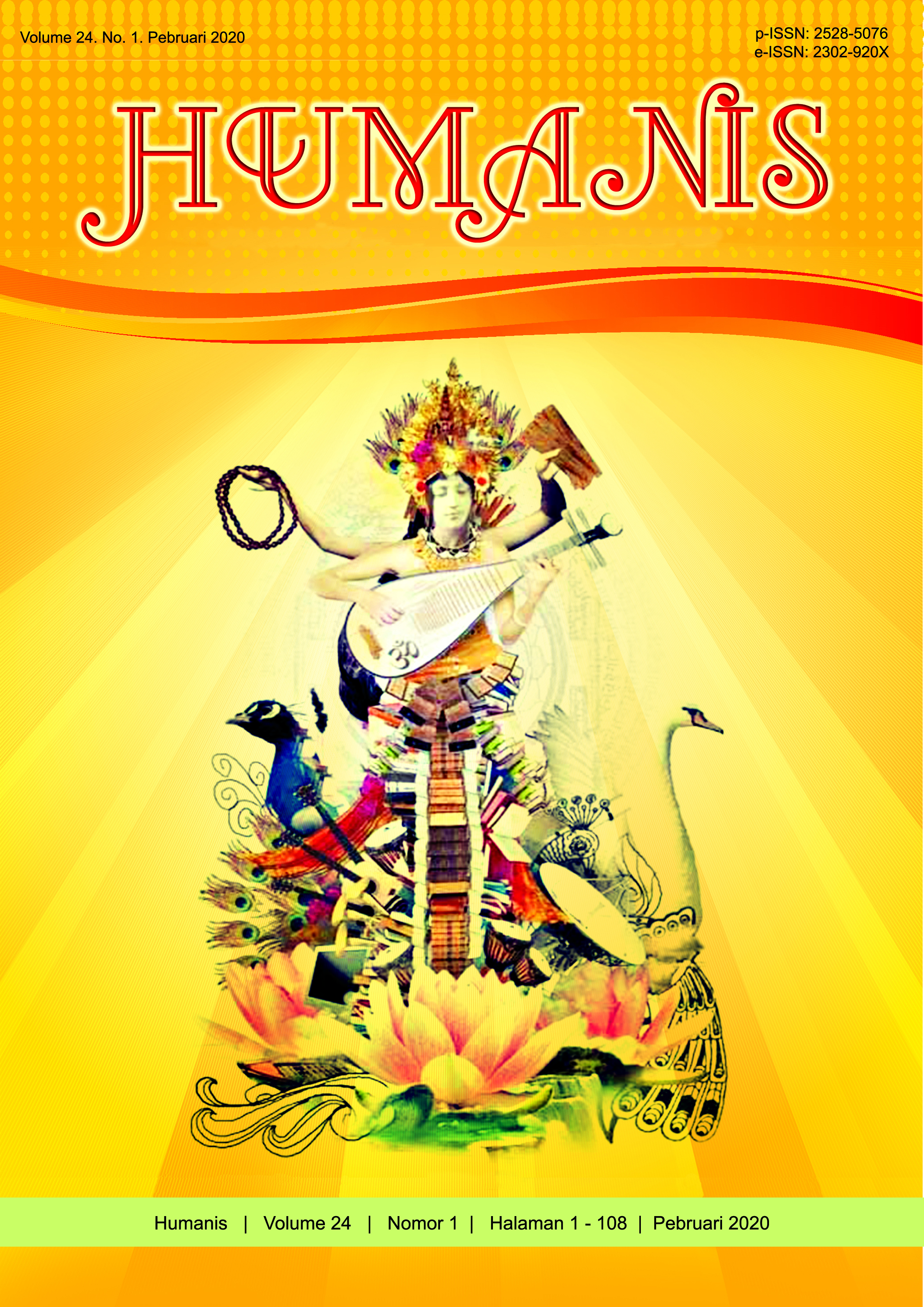Kajian Kalimat Efektif pada Laporan Berita Reporter Metro TV
Abstract
This research entitled “The News Report of Metro TV Reporter: The research of effective sentence”. The aim of this research was to find out the description, error, and percentage of effective and ineffective sentence in the news report of Metro TV reporter. The used theory refer to some ideas from the experts, those are Keraf (1980), Razak (1986), Sugono (2001), Putrayasa (2014), and Agency of Language Development and Coaching (2014). The used method to collect the data in this research was observation method, then the data was analyzed with qualitative descriptive method, quantitative method, and agih method. Method of presenting analyzed data that used in this research were formal and informal method. Data source in this research was from twelve videos of news report of Metro TV reporter in 2018. The result of this research showed that Metro TV reporter's understanding of the use of effective sentences reach 30, 22% from 12 news reports. This is proven by the discovery of 97 ineffective sentences out of 139 sentences. The error of ineffective sentence in news report of Metro TV reporter was divided into four kinds, those were the accuracy of information 7 sentences (5.03%), stiffness 6 sentences (4,32%), efficiency 48 sentences (34.53%), multiple errors and plural 36 sentences (25.90%). The total percentage of the error ineffective sentence as a whole was 69.78%. Based on this percentage, the highest frequency of errors was in the aspect of efficiency.
Downloads
References
Aryusmar. (2011). Karakteristik Bahasa Jurnalistik dan Penerapannya pada Media Cetak. Vol 2, No. 2, pp 1209-1218.
Azizah, Nurul. (2015). Keefektifan Kalimat pada Skripsi Mahasiswa Fakultas Ilmu Pendidikan Universitas Negeri Jakarta. Vol. 06, No. 2, pp. 73-80.
Fitriyani, Dwi. (2015). Penguasaan Kalimat Efektif dan Penguasaan Diksi dengan Kemampuan Menulis Eksposisi pada Siswa SMP. Vol. 1, pp 129-139.
https://en.wikipedia.org/wiki/MetroTV, diakses 18 September 2018.
Indrayani, Sang A.P.S. dkk. (2015). Analisis Kalimat Efektif Cerpen Siswa Kelas IX SMA Negeri 1 Tampaksiring. Vol. 3, No. 1.
Kasanova, Ria. (2016). Penggunaan Efektif pada Skripsi Mahasiswa Fakultas Ekonomi Jurusan Manajemen Universitas Madura. Vol. 1, pp. 231-253.
Keraf, Gorys. 1980. Komposisi: Sebuah Pengantar Kemahiran Bahasa. Cetakan Keenam. Flores: Nusa Indah.
Khotimah, Khusnul. (2017). Ciri Kalimat pada Berita Utama Surat Kabar: Analisis Kritis terhadap Harian Terbitan Daerah. Vol. 2, pp. 1-7.
Madia, I Made. 2017. “Penataan Kalimat dan Paragraf di dalam Bahasa Jurnalistik”. Makalah Fakultas Ilmu Budaya. Universitas Udayana, Denpasar.
Mbete, Aron Meko dkk. 2013. Dinamika Bahasa Media Televisi, Internet, dan Surat Kabar. Denpasar: Udayana University Press.
Maruka, Sarima R. (2018). Penggunaan Kalimat Efektif dalam Poster pada Majalah Dinding di Fakultas Keguruan dan Ilmu Pendidikan Universitas Tadulako. Vol. 3, pp. 1-9.
Nurhayatin, Titin dkk. (2018). Analisis Keefektifan Penggunaan Kalimat dalam Karya Tulis Ilmiah Mahasiswa Pendidikan Guru Sekolah Dasar. Vol. 4, pp. 102-114.
Pericha, Alivia D.R. (2017). Kalimat Tidak Efektif dalam Rubrik Jati Diri Surat Kabar Jawa Pos Edisi 2016. Vol. 2(2), pp 510-518.
Puspitasari, Eka. (2017). Karakteristik Bahasa Jurnalistik dalam Artikel Surat Kabar Priangan. Vol. 1, pp. 1-11.
Putrayasa, I.B. 2014. Kalimat Efektif (Diksi, Struktur, dan Logika). Cetakan Keempat. Bandung: PT Refika Aditama.
Razak, Abdul. 1986. Kalimat Efektif: Struktur, Gaya, dan Variasi. Cetakan Kedua. Jakarta: PT Gramedia.
Riswati. (2015). Penggunaan Kalimat Efektif dalam Karya Tulis Ilmiah Mahasiswa. Vol. 1, No. 2, pp. 221-227
Sugono, Dendy dkk. 2001. Kalimat. Jakarta: Pusat Bahasa.
Usman, Raja. (2012). Penggunaan Kalimat Efektif dalam Berkomunikasi Lisan dan Tulisan Siswa Kelas III SMP AL Ittihad Rumbai Pekanbaru. Vol 7, pp 118-124.
Widarmanto, Tjahjono. 2015. Pengantar Jurnalistik: Panduan Awal Penulis dan Jurnalis. Yogyakarta: Araska.


















